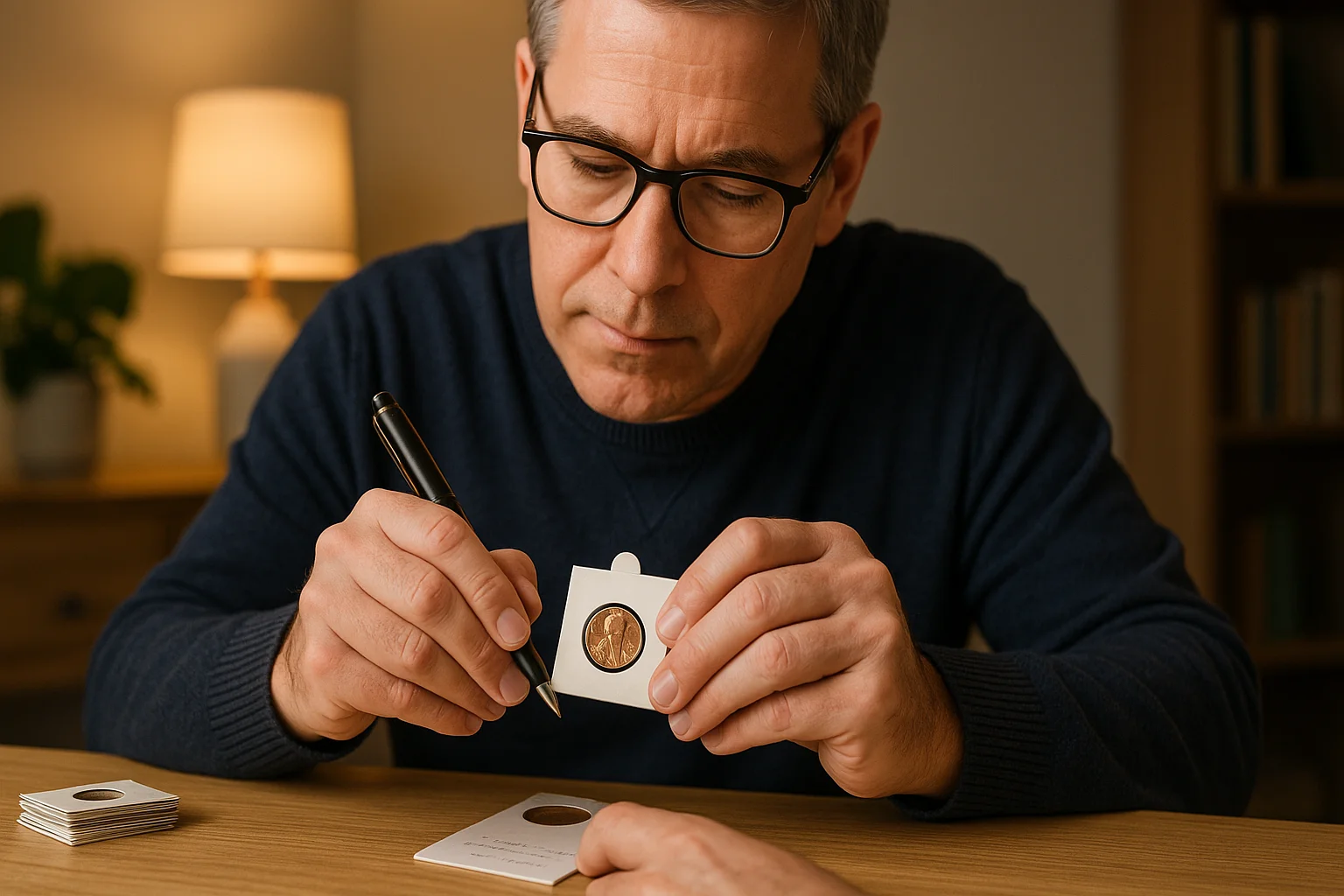Error or Damage? How to Tell If Your 2021 Quarter Is Worth Collecting
You pull a 2021 quarter from your change and almost toss it aside without a second thought. Just another 25 cents, right? But wait — something looks off. A strange bump near Washington’s eye. A blur in the lettering. Could this be something more?
The growing buzz around 2021 quarter error coins has left many wondering if what looks like damage could actually be a valuable minting flaw. While most quarters are just everyday currency, a small number have slipped through the U.S. Mint’s quality control with oddities that collectors are eager to find — and willing to pay for.
The challenge? Most people don’t know how to tell a real minting error from simple post-mint damage. A scratch from being dropped on asphalt isn’t valuable — but a doubled inscription created during the minting process just might be.
And 2021 was an especially notable year. It featured two distinct quarter designs:
- Tuskegee Airmen National Historic Site (final America the Beautiful issue)
- Washington Crossing the Delaware (a return to a classic motif)
Both have already attracted collectors’ attention — and both have been found with genuine errors. If you want to know whether that weird quarter is junk or a jackpot, it all starts with learning what counts as a real error.
What Counts as a 2021 Quarter Error
Not all strange-looking coins are valuable, but the ones that were born flawed at the mint can be. These are called minting errors, and they happen during production — not later in circulation. In other words, if something went wrong while the coin was being stamped or ejected from the press, it could be a collectible.
Here are some of the most common verified minting errors found on 2021 quarters:
- Die Chip: A piece of the die breaks off, leaving a raised blob of metal on the coin — often near Washington’s mouth, eye, or lettering.
- Retained Cud: A break along the rim of the coin where metal pools into a blob due to a shattered die.
- Doubling on the obverse and reverse: When the design is stamped more than once in slight misalignment, often visible on words like IN GOD WE TRUST or the date.
- Off-Center Strike: When the coin isn’t properly aligned in the press, leaving part of the design missing and blank space visible.
Interesting fact: Some 2021 quarters with retained cuds or strong die chips have sold on eBay and other auction platforms for $30 to $75, particularly if the coin is in near-mint condition. A seemingly small flaw can mean a big difference. So next time you find a coin that doesn’t look quite right, take a moment before tossing it in the tip jar — it might be a mistake worth keeping.

Damage Disguised as Value — and Real Errors That Are Worth Something
So you’ve found a strange-looking 2021 quarter — maybe the surface is rough, or there’s a weird smudge across the lettering. Could it be a valuable error? Maybe. But more often than not, it is just damage from circulation — not something minted incorrectly, but something that happened after the coin left the U.S. Mint.
What’s Just Damage? Common Misconceptions
Many new collectors (and even some experienced ones) mistake everyday wear and tear for valuable minting errors. The truth is, most unusual marks on a coin are just the result of being tossed around in pockets, vending machines, and coin jars.
Some of the most frequently mistaken “errors” are:
- Scratches from keys, other coins, or drops
- Discoloration from dirt, water, or environmental exposure
- Tiny nicks or dents on the edges
It is easy to be fooled — especially when you want the coin to be valuable. But recognizing the difference between natural wear and a genuine error is key to avoiding disappointment.
Quick tip: If a raised mark doesn’t look like it’s part of the original design — and instead appears “glued” on top or scratched in — it’s almost certainly damage, not an error.
Here’s a simple side-by-side table to help you tell the difference:
| Feature | Error | Damage |
| Repeated letters or numbers | Doubled Die | Random blur/scratch |
| Design appears misaligned | Off-Center Strike | Bent coin |
| Raised blob of metal | Die Chip | Dirt or corrosion |
| Tool-like marks or gouges | Not a mint error | Physical damage |
It’s a learning curve, and everyone makes misidentifications at first. But every mistaken guess is still progress toward becoming a sharper collector.
Documented 2021 Quarter Errors That Are Actually Valuable
Now that you know what isn’t an error, let’s look at a few real 2021 quarter errors that collectors have actually confirmed and sold — not just online rumors or forum wishful thinking.
One of the most frequently found 2021 quarter errors comes from the Washington Crossing the Delaware design. Collectors have reported doubling on the reverse — especially in the word DELAWARE and along the edge inscriptions. Another popular one involves the Tuskegee Airmen quarter, where a retained cud can be seen on some coins minted in Philadelphia.
These errors are real and have been sold in online auctions and cataloged by grading companies like PCGS and community platforms like NGC’s error coin registry.
Examples of Real 2021 Quarter Errors:
- 2021-P Die Chip on Washington’s Hat — a blob-like bump that sold for up to $35 in near-mint condition
- 2021-D Doubled Die Reverse — found in DELAWARE text; values vary depending on clarity and grade
- 2021-S Proof with die polish lines — often confused for errors but not actually rare or valuable
Did you know that coins from the first year of a new design (like 2021) often attract more attention from collectors, making errors from these issues especially sought after. So if you’ve found a 2021 quarter that looks a little off, the next question becomes: how can you double-check your suspicions without going down a rabbit hole of error coin theory?
When In Doubt, Use Coin ID Scanner
Let’s be honest — not everyone has the time (or the confidence) to tell a valuable coin from a scratched one. That’s where helpful tools come in. Coin ID Scanner is a mobile app due to which you can quickly identify your coin and receive data to further compare examples and get a basic idea of what you might be holding.
While it won’t tell you if your coin has a rare minting error (that still takes a trained eye), it can help you:
- Confirm the correct year, type, and mint mark
- Check basic market value ranges
- Keep track of interesting finds in one place
Why It’s Worth a Try:
- Super beginner-friendly
- Helps avoid mistaking common coins for rarities
- Saves time compared to flipping through long coin catalogs
It is not a replacement for expert grading — but it’s a great pocket tool for getting started, especially if you are sorting through a handful of interesting finds from circulation.
Found Something Interesting? Here’s What to Do Next
So, you’ve spotted something odd on your 2021 quarter — maybe a raised bump where it doesn’t belong, or a strange doubling of letters. You’ve compared it to known errors, and your coin might just be the real deal. What now?
First Rule: Don’t Clean It!
It might be tempting to polish the coin to get a better look, but that is one of the worst things you can do. Cleaning a coin can increasingly reduce its value, even if done gently. Collectors and grading companies prefer coins in their original state, grime and all.
How to Handle a Potential Error Coin:
- Don’t clean or polish the surface — leave it as found.
- Store it safely — use a 2×2 cardboard holder or a plastic capsule to protect the coin from further wear.
- Label the holder — include notes like the mintmark, where you found it, and what you noticed.
- Photograph it in good lighting — especially any error features like die chips or doubling.
- Compare it to trusted sources — check databases like the PCGS or NGC error listings.
Storage tip: Keep your collection in a cool, dry place. Humidity can cause oxidation, even on newer coins. You can also start a small collector’s log (physical or digital) to track your finds — it’s surprisingly satisfying and useful later if you decide to sell or get a coin graded.
If your coin shows strong signs of a rare or valuable error (and is in good condition), it may be worth submitting to a professional grading service like PCGS or NGC. Grading costs money, so do some research first — but for high-grade or clearly documented errors, it could make all the difference.

Is That Weird-Looking 2021 Quarter Worth Keeping?
By now, you’ve probably realized that spotting an unusual coin isn’t just a lucky moment — it’s an opportunity to learn, maybe even profit, and definitely to appreciate a little piece of modern history.
Should You Hold Onto That Quarter?
In short — yes, especially if:
- It has a known error (like doubling or a die chip)
- It’s in excellent condition (sharp details, no scratches)
- It stands out from others in your change
Even if it isn’t worth much today, many error coins gain value over time, especially if they’re part of a new series or mark a design transition. The 2021 quarters are particularly interesting for that reason — they marked the end of the long-running America the Beautiful program and the beginning of a new chapter in U.S. coinage with the 2022 American Women series.
Interesting to know: Collectors often look back at transitional years like 2021 as “sleepers” — periods where unusual features and low awareness mean hidden jewels can still be found in circulation.
Tip: If your gut tells you it might be special — don’t rush to sell. Hold it, store it safely, and revisit its value after some time. Coins like these sometimes take a few years to “wake up” in the collector’s market.
A Coin, a Clue, and a Bit of Curiosity
In the end, whether your 2021 quarter turns out to be valuable or not, it is more than just pocket change. It is a reminder that even in the most ordinary places — like your spare change — little mysteries and miniature artworks are waiting to be noticed. So go ahead. Keep that odd quarter, learn from it. You might just be starting your own collection without even realizing it.
